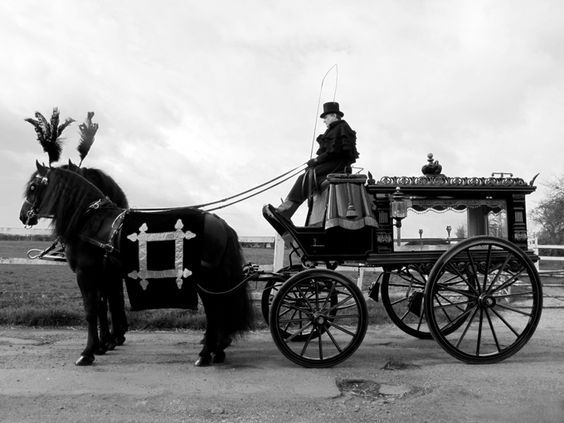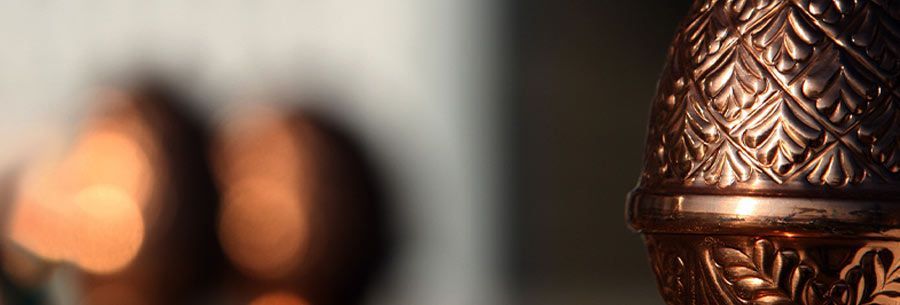Victorian Funeral Customs
How Victorians Mourned

Death was a constant presence in Victorian life. Epidemics and illnesses were widespread, and with larger families, many children didn’t survive into adulthood. It wasn’t unusual for families to lose half their children before they reached maturity. As a result, funerals were much more frequent during the Victorian era than they are today.
Many of the traditions of this time are attributed to England’s Queen Victoria. Her husband, Prince Albert, passed away suddenly from typhoid fever at 42, after a month-long illness. The couple had been married for 21 years and had 9 children together. Queen Victoria was devastated by his death, famously writing to her daughter: “How I, who leant on him for all and everything—without whom I did nothing, moved not a finger, arranged not a print or photograph, didn’t put on a gown or bonnet if he didn’t approve—shall go on, to live, to move, to help myself in difficult moments?”
The day of Albert’s funeral saw every shop closed, blinds drawn, and streets silent. Those who did go out wore the deepest mourning attire. Following his death, Queen Victoria ordered his rooms to be kept as they were when he was alive, with servants bringing hot water daily for his morning shave. She also commissioned statues and displayed mementos of him throughout royal residences. Retreating to Windsor Castle and Balmoral, where she had spent happy times with Albert, she continued to mourn him for the remaining 40 years of her life by wearing black.
Victoria’s public mourning deeply influenced society, giving rise to many elaborate rituals for honouring the dead, such as wearing mourning clothes, holding lavish funerals, and erecting ornate gravestones or mausoleums.
While today “keeping up with the Joneses” refers to status symbols like cars or homes, in Victorian times, the competition was about who could hold the most extravagant funeral or mourning ceremony.
It’s hard to believe that just a few generations ago, funeral customs were so different. By learning about Victorian cemetery traditions, we gain insight into the world our ancestors lived in.
Funeral invitations during this time were formal, written with black borders, and delivered by private messenger. Attendance without an invitation was improper, and failure to attend after being invited was equally frowned upon. Black-bordered stationery and handkerchiefs were also customary during mourning, with wider borders indicating a more recent death. As time passed, the borders narrowed, signalling the end of the mourning period.
With the medical field still in its infancy, it wasn’t uncommon for doctors to mistakenly declare someone dead. There are many tales of individuals being buried alive, having fallen into comas, a condition then referred to as “sleeping sickness.” To prevent premature burial, some families included safeguards in their loved ones’ coffins. For instance, a bell was sometimes attached to the deceased’s hand so they could signal if they woke. This practice gave rise to the phrase “saved by the bell.” Some coffins were even fitted with windows or breathing tubes to allow for signs of life to be observed.
British royalty and nobility played a significant role in shaping Victorian funeral traditions. The Duke of Wellington’s funeral in 1852, for example, featured a hearse drawn by twelve black horses, each adorned with ostrich feather plumes, which soon became a popular funeral decoration. Ostrich feathers, often dyed in different colours, became a symbol of wealth at funerals, with the finest services featuring them extensively.
Another fascinating tradition was the hiring of professional mourners, also known as “mutes,” whose job was to silently maintain the sombre atmosphere. Victorian society discouraged public displays of grief, particularly loud crying, so these mutes helped ensure that mourning remained dignified.
Mourning jewellery was also a common practice, often incorporating the hair of the deceased into bracelets, necklaces, and brooches. While it was considered inappropriate for women to wear jewellery during the deep mourning period, they often wore these personal mementos later on. Jewellery also often featured jet, a black gemstone, or mourning symbols like willow trees, urns, or clasped hands.
Other traditions included wearing black ribbons on clothing, door handles, and even pets to prevent further death in the family. Crepe fabric, with its non-reflective texture, was used to trim garments and cover mirrors during the mourning period.
Funerals were so important that many middle- and lower-class families would prioritize funeral savings over basic necessities like food and shelter. Ironically, this financial strain sometimes increased the likelihood that families would need those savings for a child’s funeral.
As Victorian mourning customs grew increasingly elaborate, families faced anxiety over adhering to these strict social expectations. Failing to follow mourning etiquette—whether by wearing a dress of the wrong colour or returning to normal life too soon—could be seen as disrespectful to the deceased.
While many of these Victorian traditions have faded, their influence still lingers in some of our modern funeral practices.













